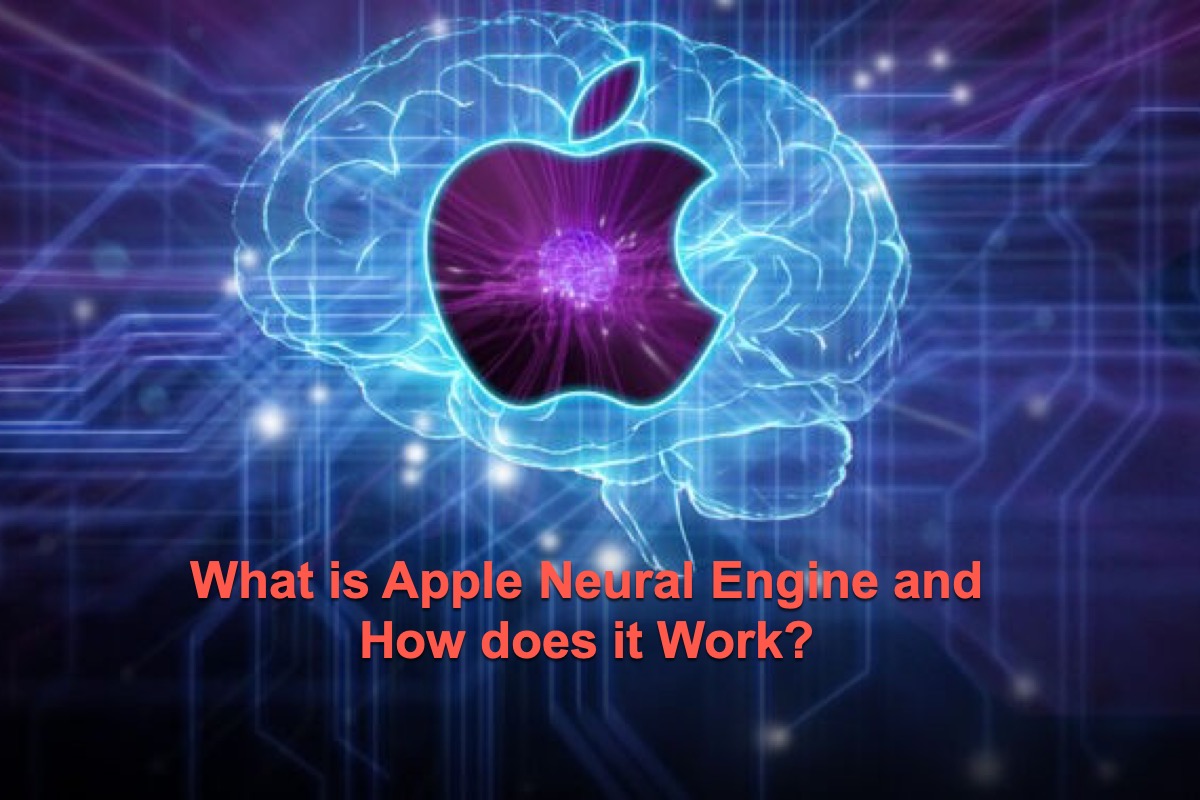A Neural Engine is a special processor that makes machine learning models super fast and smooth. Nowadays, most electric machines like iPhones and iPads have a Neural Engine, including Macs.
This article will walk you through ANE, also known as Apple's Neural Engine with a comprehensive introduction and explores how Apple's Neural Engine work. Let's get started then.
What is Apple's Neural Engine?
Apple Neural Engine is a name in terms of the market for sorts of highly purposed compute cores optimized for the energy-efficient aim of deep neural networks on Apple products. It boosts machine learning (ML) and artificial intelligence (AI) algorithms, providing super-fast sunning speed, vast memory, and power strengths over the main CPU or GPU.
Apple's Neural Engine does major and significant contributions to Apple devices' heat sink when performing complicated ML and AI computations. However, Apple's Neural Engine is not soldered on all Apple products, examples include the Apple Watch, Intel-based Macs, and the devices shipped before 2016.
The first generation of Apple Neural Engine comes with Apple's A11 chip in the 2017 iPhone X, which demonstrates its powerful backup to Face ID and Animoji. The good news is that the latest ANE in the A15 sonic chip is 26 times faster than the first generation.
Nowadays, ANE supports the features like offline Siri and it can free up CPU and GPU to emphasize the tasks that are more appropriate for them.
If you find this article informative, please share it on your social platform to let more people read it.
How does Apple's Neural Engine work?
ANE exceeds tremendously in performing extensive computing operations, such as multiplication and accumulation, machine learning and artificial intelligence algorithms, picture processing, machine translation, etc. This article is going to list some AI features powered by Apple Neural Engine that you may be familiar with and expect for:
- Natural language processing: ANE gives you faster and more trusted voice recognization for Dictation and Siri, boosted natural language learning in the Translation app, and instant text translation in Photos, Cameras, and so on.
- Live Text: Live Text supported by ANE gives you optical character recognition (OCR) in Camera and Photos allowing you to copy handwriting and text from images.
- Games: Photorealistic and immersive experience in 3D video games.
- Augmented reality: People occlusion and motion tracking in AR apps.
- Computer vision: Finding objects in images like landmarks, pets, plants, books, and flowers using the Photos app or Spotlight search; Getting additional information about recognized objects using Visual Look Up in places like Safari, Mail, and Messages.
- Video analysis: Detection of faces and objects on video in apps like Final Cut Pro.
What devices have an Apple Neural Engine?
Since we have elaborated on Apple Neural Engine's basic knowledge, the next eye-catching point should be put on the devices that are designed with Apple Neural Engine.
Sorts of chips comes with an ANE, including A11 Bionic, A12 Bionic, A12X Bionic, A12Z Bionic, A13 Bionic, A14 Bionic, A15 Bionic, A16 Bionic M1, M1 Pro, M1 Max, M1 Ultra, M2, M2 Pro, M2 Max, and the approaching M3 chip.
Each chip is related to various Apple products, you can check if your device is listed here:
| A11 Bionic | iPhone 8 (2017), iPhone 8 Plus (2017), and iPhone X (2017) |
| A12 Bionic | iPhone XS (2018), iPhone XS Max (2018), iPhone XR (2018), iPad (8th gen, 2020), iPad Air (3rd gen, 2019), iPad Mini (5th gen, 2019), Apple TV 4K (2nd gen, 2021) |
| A12X Bionic | iPad Pro 11-inch (1st gen, 2018), iPad Pro 12.9-inch (3rd gen, 2018) |
| A12Z Bionic | iPad Pro 11-inch (2nd gen, 2020), iPad Pro 12.9-inch (4th gen, 2020), Developer Transition Kit (2020) |
| A13 Bionic | iPhone 11 (2019), iPhone 11 Pro (2019), iPhone 11 Pro Max (2019), iPhone SE (2nd gen, 2020), iPad (9th gen, 2021), Studio Display (2022) |
| A14 Bionic | iPad Air (4th gen, 2020), iPhone 12 (2020), iPhone 12 Mini (2020), iPhone 12 Pro (2020), iPhone 12 Pro Max (2020), iPad (10th gen, 2022) |
| A15 Bionic | iPad Mini (6th gen, 2021), iPhone 13 (2021), iPhone 13 Mini (2021), iPhone 13 Pro (2021), iPhone 13 Pro Max (2021), iPhone 14 (2022), iPhone 14 Plus (2022), iPhone SE (3rd gen, 2022), Apple TV 4K (3rd gen, 2022) |
| A16 Bionic | iPhone 14 Pro (2022), iPhone 14 Pro Max (2022) |
| M1 | MacBook Air (2020), MacBook Pro 13" with two Thunderbolt 3 ports (2020), Mac mini (2020), iMac 24-inch (2021), iPad Pro 11-inch (3rd gen, 2021), iPad Pro 12.9-inch (5th gen, 2021), iPad Air (5th gen, 2022) |
| M1 Pro | MacBook Pro 14-inch (2021), MacBook Pro 16-inch (2021) |
| M1 Max | MacBook Pro 14-inch (2021), MacBook Pro 16-inch (2021), Mac Studio (2022) |
| M1 Ultra | Mac Studio (2022) |
| M2 | MacBook Air (2022), MacBook Pro 13" with two Thunderbolt 3 ports (2022), iPad Pro 11-inch (4th gen, 2022), iPad Pro 12.9-inch (6th gen, 2022), Mac mini (2023) |
| M2 Pro | MacBook Pro 14-inch (2023), MacBook Pro 16-inch (2023), Mac mini (2023) |
| M2 Max | MacBook Pro 14-inch (2023), MacBook Pro 16-inch (2023) |
Wrap up
Indeed, Apple's Neural Engine improves running speed, boosts performance, relieves CPU and GPU compute pressure, and frees up unified memory of Apple products to a large extent. It's a great convention that brazes a new trial for Apple's neural engine and a benchmark for more excellent neural engines.
This article is a perfect guideline for people who knows nothing about Apple's Neural Engine. If you're interested in it, start reading now!
